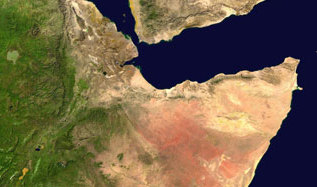PBS: Escaping Eritrea … [Read More...] about ካብ ውሽጢ ቤት ማእሰርታት ኤርትራ
Sub-Saharan Africa not winning friends in the medical device market
| 06 March 2017 | Business Day
BMI gives the region the lowest average country risk score due to systemic economic and political risks, pressurised aid flows and corruption
Sub-Saharan Africa ranks the least attractive region to commercialise medical devices because of the region’s poor operational environment and barriers to access healthcare, Fitch’s research arm BMI said in a recent report.
“Reflecting a range of systemic economic and political risks — ranging from security threats in Nigeria and Kenya, to lower commodity prices, pressurised aid flows and corruption — sub-Saharan Africa continues to have the lowest regional average country risk score,” BMI said.
Several sub-Saharan African markets came with significant regulatory and operational risks and did not allocate much towards health expenditure, making them less attractive, the report said.
While the region had shown great potential with a growing middle class, most of the combined 300-million strong population were poor, while healthcare resources remained inadequate. The report said risks were high in the region because the regulatory framework was underdeveloped and few people could afford health insurance, which meant “reimbursement is also low”.
BMI Research medical device analyst Ethel Kuntambila said although African markets were responsive to investment in medical equipment, the region’s poor operational environment and poor access to healthcare gave the region poor rankings in comparison to other regions.
She said sub-Saharan Africa had limited manufacturing capabilities so most of the medical equipment was imported from Europe, the US and/or Asia. A weak rand made importing more expensive.
Manufacturing in sub-Saharan African countries was mostly limited to basic low-tech devices such as consumables, she added.
SA sat at the top of the new medical devices risk-reward index (RRI), while Nigeria is at the bottom.
SA has the largest medical device market and manufactures some devices locally although it is primarily reliant on imports from Germany and the US. Urbanisation, economic diligence and business transparency creates a conducive environment with less risk.
Ghana and Kenya are ranked next after SA because of their rapidly urbanising populations, which drive demand for better healthcare, fast-growing markets and health expenditure by government.
Nigeria, at the bottom of the list, is undermined by an under-developed regulatory framework and low industry risk score because its population has poor access to healthcare despite the national health insurance scheme that has been launched and the government prioritising primary healthcare in rural areas.
“We estimate our sub-Saharan African region, made up of SA, Nigeria, Kenya and Ghana, to be about $1.2bn in 2016,” said Kuntambila.
Kuntambila said the increase of noncommunicable diseases in the region, amplified the need for advanced equipment.
BMI defines a medical device as any piece of equipment or apparatus used to treat or diagnose an illness that comes into direct contact with the patient, including consumables; diagnostic imaging; dental products; orthopaedics and prosthetics; and patient aids.
An increasing prevalence of noncommunicable diseases in the region, such as cancer and diabetes, requires more advanced equipment, which raises the need for these devices. The Mortality and Causes of Death in SA: Findings from Death Notification, 2015 report, released by Statistics SA on Tuesday said noncommunicable diseases caused more than half of the 460,236 registered deaths in SA in 2015.
Capital goods and equipment are more expensive than day-to-day devices such as consumables. However Kuntambila noted that there were companies that engineered low-cost alternatives to increase access to devices.
For example, GE Healthcare’s Sustainable Healthcare Solutions (SHS) business, which aims to develop high-value, low-cost technologies and healthcare delivery solutions across multiple care settings, and the Philips VISIQ portable ultrasound system with high resolution imaging in a small, lightweight package and a two-and-a-half hour battery life.
Western Europe is rated the most attractive region as it benefits from a large market, which represents about 85% of the European total.
Government initiatives to promote innovation, a population of more than 400-million, well-developed healthcare systems and EU agreements that facilitate trade and the movement of labour are some of the factors that make this region attractive.
“We estimate the whole European market to be about $93.4bn in 2016,” said Kuntambila.
Second in line is the Asia-Pacific region. Asia benefits from the presence of two of the world’s five-largest markets, Japan and China, and more than half of the world’s population, including an elderly population of 300-million. Kuntambila estimated the market to be about $70.0bn in 2016.
